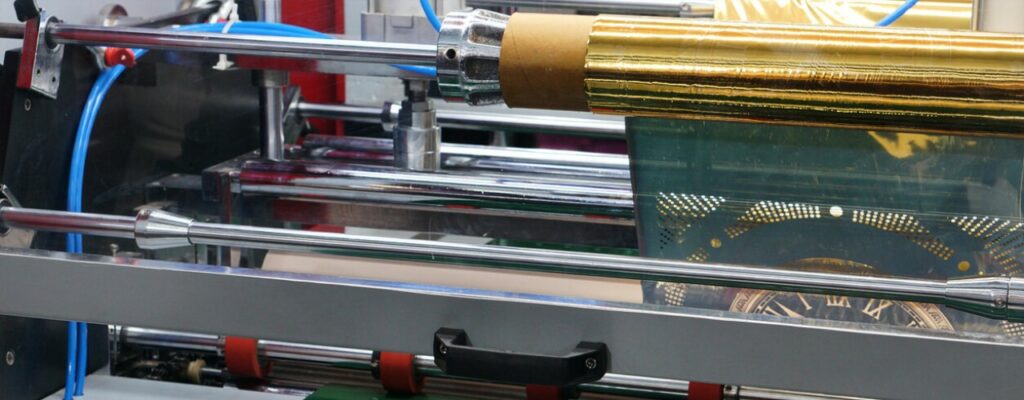

Many designers look for ways to make their work stand out immediately. When applied to packaging or stationery, foil printing can make that impact. The process enhances the appearance of your work while adding a tactile feel that leaves an impression.
Independent makers and established brands have embraced foil as a way to highlight quality and show attention to detail. Knowing how to approach it effectively can mean the difference between an average outcome and an outstanding one.
What to Know Before Starting a New Project
Preparation is central to achieving consistent results. Before moving into production, consider the following:
- Review your design with foil in mind, simplifying areas that may not transfer cleanly
- Check the stock or substrate to ensure it can handle heat and pressure
- Think about how foil interacts with other design elements. Too much can overwhelm, while too little can feel like an afterthought
Addressing these points early creates a foundation for smoother production and a better end product.
How Can it Change Client Perceptions?
Clients often see foil as a sign of investment in quality. A brochure with foil accents feels more substantial than one without. Packaging with metallic highlights gives products more status. Explaining the impact of foil printing to clients during the design stage shows how it’s more than decoration. It becomes a way to influence how the final piece is received.
Those who recognise this can make foil part of a strategic design solution rather than a last-minute add-on.
The Unexpected Uses of Foil Printing
Foil is not limited to logos or headings. It can be applied in unconventional ways that catch attention, like highlighting subtle patterns across a background or adding a shimmer to illustrations. It can also create security-style holographic effects for authenticity. Using foil in less obvious places can really grab attention, allow designers to differentiate their work and demonstrate their innovation to clients.
How Can Workflow Planning Improve Results?
The success of foil printing depends on more than design and materials. It also comes down to workflow. Planning when and how foil will be applied in the production process reduces errors. For example, foiling after varnishing or laminating can create challenges. Sequencing the steps ensures the correct adhesion and finish.
Communication with printers and suppliers during planning also confirms your technical requirements and avoids problems further down the line.
Can Colour and Foil Be Combined?
Colour and foil combinations can shift the tone of a project. High-contrast pairings like black card with gold foil produce a bold look. Subtle choices, such as cream card with rose-gold foil, feel more understated. There’s no universal rule. It depends on the mood you want to convey.
Layering printed colour with foil can also add depth. Printing a background pattern and highlighting one element in foil draws the eye without overwhelming the design.
How Important is the Texture?
You can change the outcome of a foil project by how a substrate feels. Smooth card stock gives you crisp edges and a mirror-like shine. Textured papers soften the look and create subtle variations across the surface. Designers can use this to their advantage by matching foil choices with the how tactile the material is.
Experimenting with the texture helps projects stand out through both sight and touch. Selecting the right combination provides more engagement for the audience.
How Does it Add Value to Small-Scale Work?
Independent creators often use foil printing to create considered finishes without needing large budgets. Packaging for handmade goods and personalised stationery benefit from foil. Customers often associate foil detailing with higher quality, which helps smaller brands compete with larger names.
Short-run collections or customised services are especially suited to foil, giving small businesses flexibility in how they present their products.
What Innovations Are Emerging?
Technology continues to expand what designers can do with foil. New digital foiling systems enable short-run customisation with minimal setup. Advances in eco-friendly foils reduce environmental impact, giving designers more sustainable options. Keeping up with these developments provides clients with forward-looking solutions that align with their values.
Exploring new innovations also ensures projects stay relevant and distinctive.
Is Testing Key to Successful Foil Printing?
Testing ensures that every variable is working as it should. A proof run checks how adhesive the foil is on the chosen stock. It also checks the spacing and temperature are optimal. These steps often reveal small issues that would otherwise affect the final product.
Building testing into the workflow may take extra time upfront but saves significant effort later.
Frequently Asked Questions
Can foil printing be done on recycled materials?
Yes, but not every recycled stock will accept foil evenly. Testing a small batch first helps confirm adhesion and finish. Choosing eco-friendly foils also improves the sustainability of the project.
What’s the difference between hot foil and cold foil?
Hot foil uses heat and pressure to bond foil onto a surface, while cold foil is applied with adhesive and cured under UV light. Hot foil often achieves stronger, sharper results on luxury materials.
How do you maintain a hot foil machine for consistent results?
Regular cleaning of the platen and rollers prevents build-up that can affect transfers. Checking alignment, monitoring pressure settings, and scheduling routine servicing all help extend the life of the machine and keep results consistent.
Why Should Designers Keep Learning About Foil Printing?
Tools and material options change quickly, and so do client expectations. Staying informed about new foils and presses allows designers to push boundaries. Experimentation is part of growth, and each project offers insights that refine future work.
Being committed to learning ensures your foil printing stays fresh and effective, keeping your portfolio relevant.
What Makes it a Tool Worth Mastering?
Mastering foil printing is invaluable. It can make your work extraordinary work and brings opportunities to surprise and engage audiences. Expand your design toolkit and explore how Metallic Elephant can support your projects. With the right tools, foil can help turn your ideas into designs that last.